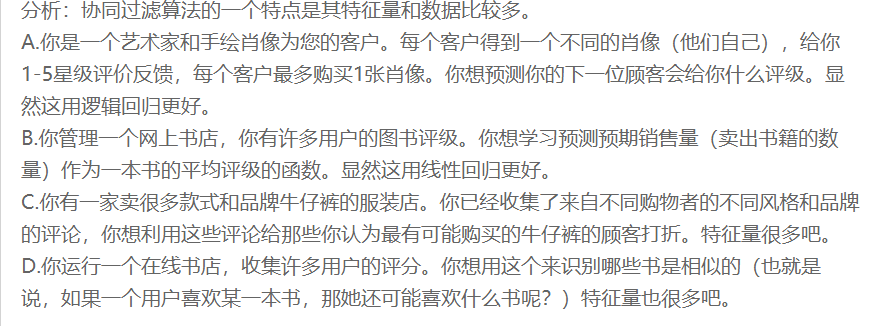

编程作业
function [mu sigma2] = estimateGaussian(X) %ESTIMATEGAUSSIAN This function estimates the parameters of a %Gaussian distribution using the data in X % [mu sigma2] = estimateGaussian(X), % The input X is the dataset with each n-dimensional data point in one row % The output is an n-dimensional vector mu, the mean of the data set % and the variances sigma^2, an n x 1 vector % % Useful variables [m, n] = size(X); % You should return these values correctly mu = zeros(n, 1); sigma2 = zeros(n, 1); % ====================== YOUR CODE HERE ====================== % Instructions: Compute the mean of the data and the variances % In particular, mu(i) should contain the mean of % the data for the i-th feature and sigma2(i) % should contain variance of the i-th feature. % mu=mean(X)'; sigma2=var(X,1)'; %第二个参数为1,表示1/N*。。。 % ============================================================= end

function [bestEpsilon bestF1] = selectThreshold(yval, pval) %SELECTTHRESHOLD Find the best threshold (epsilon) to use for selecting %outliers % [bestEpsilon bestF1] = SELECTTHRESHOLD(yval, pval) finds the best % threshold to use for selecting outliers based on the results from a % validation set (pval) and the ground truth (yval). % bestEpsilon = 0; bestF1 = 0; F1 = 0; stepsize = (max(pval) - min(pval)) / 1000; for epsilon = min(pval):stepsize:max(pval) % ====================== YOUR CODE HERE ====================== % Instructions: Compute the F1 score of choosing epsilon as the % threshold and place the value in F1. The code at the % end of the loop will compare the F1 score for this % choice of epsilon and set it to be the best epsilon if % it is better than the current choice of epsilon. % % Note: You can use predictions = (pval < epsilon) to get a binary vector % of 0's and 1's of the outlier predictions cvp = pval<epsilon;%异常情况 truepositive = sum((cvp==1)&(yval==1)); falsepositive = sum((cvp==1)&(yval==0)); truenegative = sum((cvp==0)&(yval==0)); falsenegative =sum((cvp==0)&(yval==1)); prec = truepositive/(truepositive+falsepositive); rec = truepositive/(truepositive+falsenegative); F1=2*prec*rec/(prec+rec); % ============================================================= if F1 > bestF1 bestF1 = F1; bestEpsilon = epsilon; end end end
function [J, grad] = cofiCostFunc(params, Y, R, num_users, num_movies, ... num_features, lambda) %COFICOSTFUNC Collaborative filtering cost function % [J, grad] = COFICOSTFUNC(params, Y, R, num_users, num_movies, ... % num_features, lambda) returns the cost and gradient for the % collaborative filtering problem. % % Unfold the U and W matrices from params X = reshape(params(1:num_movies*num_features), num_movies, num_features); Theta = reshape(params(num_movies*num_features+1:end), ... num_users, num_features); % You need to return the following values correctly J = 0; X_grad = zeros(size(X)); Theta_grad = zeros(size(Theta)); % ====================== YOUR CODE HERE ====================== % Instructions: Compute the cost function and gradient for collaborative % filtering. Concretely, you should first implement the cost % function (without regularization) and make sure it is % matches our costs. After that, you should implement the % gradient and use the checkCostFunction routine to check % that the gradient is correct. Finally, you should implement % regularization. % % Notes: X - num_movies x num_features matrix of movie features % Theta - num_users x num_features matrix of user features % Y - num_movies x num_users matrix of user ratings of movies % R - num_movies x num_users matrix, where R(i, j) = 1 if the % i-th movie was rated by the j-th user % % You should set the following variables correctly: % % X_grad - num_movies x num_features matrix, containing the % partial derivatives w.r.t. to each element of X % Theta_grad - num_users x num_features matrix, containing the % partial derivatives w.r.t. to each element of Theta % X_temp = (X*Theta')-Y; J_temp = (X_temp).^2; J = sum(J_temp(R==1)) /2;%代价函数 X_grad = (X_temp.*R)*Theta +lambda*X; Theta_grad=(X_temp.*R)'*X +lambda*Theta;%正则化,(X_temp.*R)'要转置 J=J+lambda/2*sum(sum(Theta.^2))+lambda/2*sum(sum(X.^2))%总的J % ============================================================= grad = [X_grad(:); Theta_grad(:)];%向量化 end